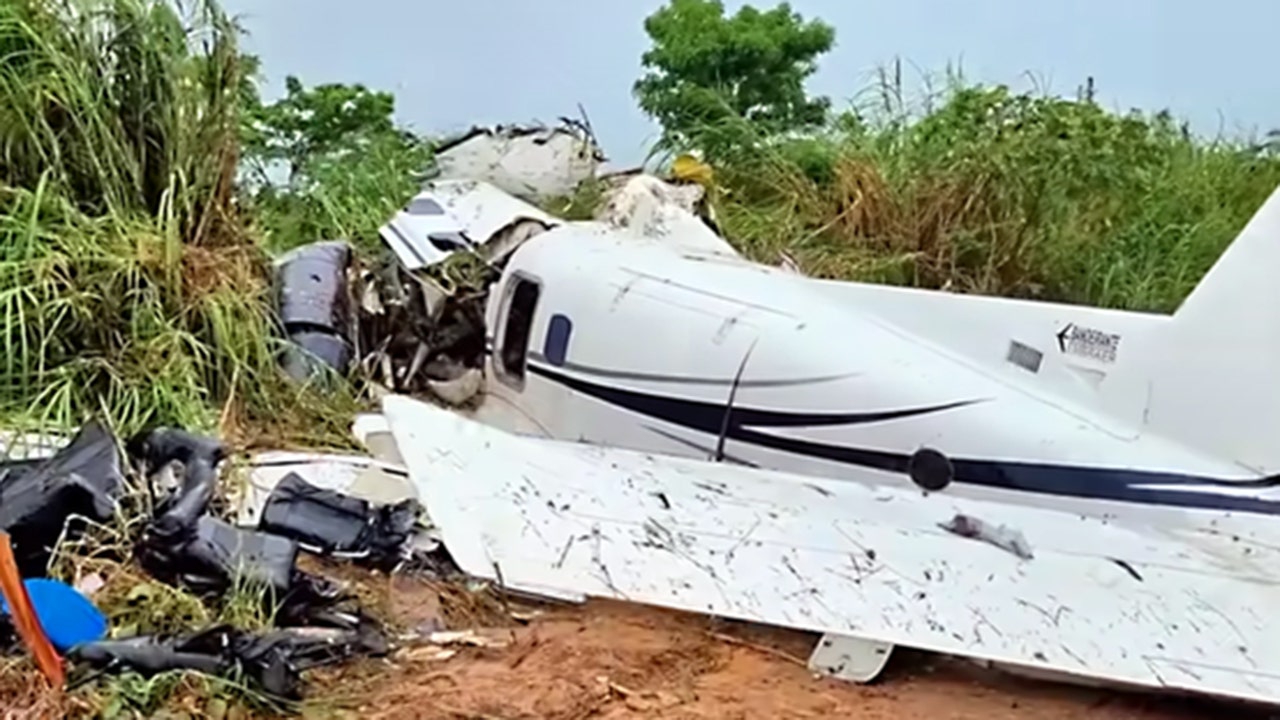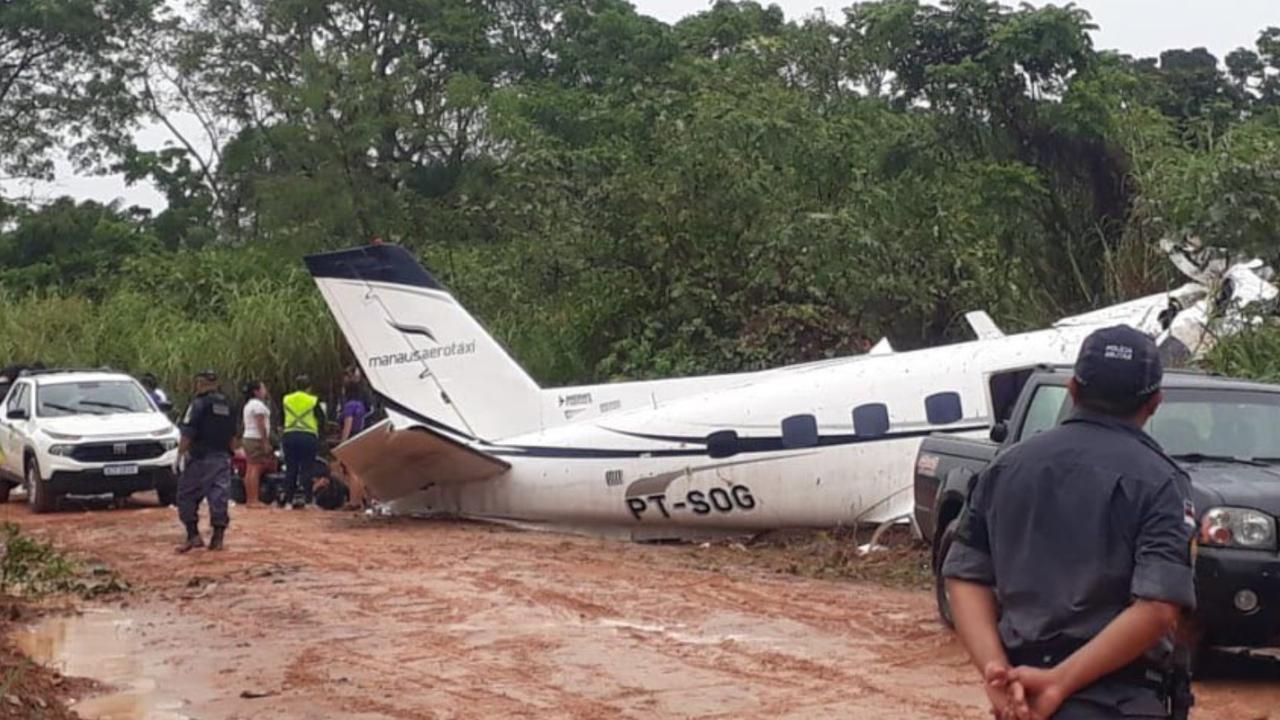History of Aviation Accidents in Brazil: Brazil Flight Crash
Brazil, with its vast geographical expanse and a growing aviation sector, has unfortunately witnessed a history of aviation accidents. Understanding the historical context of these incidents is crucial for analyzing current safety trends and identifying areas for improvement.
Timeline of Major Aviation Accidents, Brazil flight crash
A chronological overview of significant aviation accidents in Brazil provides insights into the evolution of safety concerns and the impact of these events on the industry.
- 1950: Cruzeiro do Sul Flight 753: This accident, involving a Douglas DC-4, resulted in 39 fatalities and remains one of the deadliest aviation accidents in Brazil’s history. The crash was attributed to pilot error and inadequate weather conditions. This incident highlighted the need for stricter pilot training and improved weather forecasting systems.
- 1961: Varig Flight 831: This accident, involving a Lockheed Constellation, claimed the lives of 35 people. The investigation revealed that a combination of factors, including mechanical failure and pilot error, contributed to the crash. This incident underscored the importance of rigorous aircraft maintenance and comprehensive safety protocols.
- 1973: Varig Flight 820: This accident, involving a Boeing 707, resulted in 124 fatalities. The investigation concluded that a combination of factors, including pilot error and a faulty altimeter, led to the crash. This incident emphasized the need for robust safety regulations and effective aircraft maintenance procedures.
- 1989: TAM Airlines Flight 402: This accident, involving a Fokker F28, claimed the lives of 96 people. The investigation determined that pilot error and a lack of communication between the crew and air traffic control contributed to the crash. This incident highlighted the importance of clear communication protocols and effective crew training.
- 2006: Gol Transportes Aéreos Flight 1907: This accident, involving a Boeing 737-800, resulted in 154 fatalities. The investigation revealed that a mid-air collision with an Embraer Legacy 600, caused by pilot error, was the primary cause of the crash. This incident emphasized the need for enhanced air traffic control systems and stricter pilot training.
- 2007: TAM Airlines Flight 3054: This accident, involving an Airbus A320, claimed the lives of 199 people. The investigation determined that the aircraft overran the runway during a landing attempt in heavy rain, leading to a collision with a hangar. This incident highlighted the importance of effective runway safety procedures and advanced weather forecasting systems.
Factors Contributing to Aviation Safety Challenges
Several factors have contributed to the historical challenges faced by Brazil’s aviation safety, impacting the country’s aviation accident record.
- Infrastructure Limitations: Brazil’s vast geographical expanse and diverse terrain have posed challenges to developing a comprehensive and robust aviation infrastructure. Some regional airports have limited facilities and outdated equipment, which can affect safety operations.
- Regulatory Oversight: The effectiveness of regulatory oversight and enforcement has been a subject of debate. Ensuring compliance with international safety standards and implementing effective monitoring mechanisms are crucial for maintaining aviation safety.
- Pilot Training: While pilot training standards have improved over the years, concerns regarding the quality and consistency of training programs have persisted. Ensuring rigorous training programs and effective pilot proficiency evaluations are critical for enhancing aviation safety.
- Economic Pressures: The pressure to maintain profitability and competitiveness within the aviation industry can sometimes lead to cost-cutting measures that may compromise safety. Balancing financial considerations with safety standards is a critical challenge.
Comparison with Other Countries
While Brazil has made significant strides in improving aviation safety, its accident record still lags behind some developed countries. Comparing Brazil’s safety performance with other nations provides valuable insights into areas for further improvement.
- International Comparisons: According to the International Civil Aviation Organization (ICAO), Brazil’s safety performance has improved in recent years, but it still ranks lower than many developed countries. This comparison highlights the need for continuous improvement in areas such as infrastructure, regulations, and pilot training.
- Regional Trends: Within the Latin American region, Brazil’s safety record is generally comparable to other countries, but some nations have achieved higher safety standards. Analyzing regional trends can identify best practices and areas for collaboration to enhance aviation safety in the region.
Impact and Aftermath of the Crash

The crash of a Brazilian aircraft, particularly in a densely populated area, would have a devastating impact on the affected communities. The immediate aftermath would involve a range of tragic consequences, including loss of life, injuries, and property damage. The incident would also trigger a comprehensive investigation aimed at determining the cause of the crash and implementing measures to prevent similar tragedies in the future.
Casualties and Injuries
The number of casualties and injuries would depend on the size of the aircraft, the location of the crash, and the time of day. A major crash in a populated area could result in hundreds of fatalities and injuries. The immediate response would involve emergency services, including firefighters, paramedics, and police officers, who would work tirelessly to rescue survivors and provide medical attention to the injured. The identification of victims and the notification of their families would be a sensitive and challenging process.
Property Damage
The crash would likely cause significant property damage, depending on the location and the impact of the aircraft. Buildings, vehicles, and infrastructure in the vicinity of the crash site could be destroyed or severely damaged. The cost of repairing or replacing damaged property could be substantial, and the economic impact on the affected communities could be significant.
Investigations
Following a major aircraft crash, a thorough investigation would be launched to determine the cause of the accident. This investigation would typically involve multiple agencies, including the Brazilian National Civil Aviation Agency (ANAC), the Brazilian Air Force, and potentially international organizations like the International Civil Aviation Organization (ICAO). The investigation would focus on a range of factors, including:
- The aircraft’s maintenance history
- The pilot’s training and experience
- Weather conditions at the time of the crash
- Air traffic control procedures
- The aircraft’s design and manufacturing
The investigation could take months or even years to complete, as investigators meticulously gather evidence, analyze data, and conduct simulations. The findings of the investigation would be crucial in identifying any contributing factors to the crash and recommending safety improvements to prevent similar accidents in the future.
Long-Term Implications
The crash would have long-term implications for the aviation industry in Brazil. The public perception of air travel could be negatively affected, leading to a decrease in passenger confidence and potentially impacting airline revenues. The aviation industry would face pressure to implement safety improvements and enhance regulatory oversight. This could include stricter pilot training requirements, more frequent aircraft inspections, and enhanced air traffic control procedures.
The Brazilian government and aviation authorities would likely face scrutiny and public pressure to ensure that the aviation industry is safe and secure. The crash could also lead to changes in aviation regulations and policies, aimed at preventing similar accidents in the future. The aviation industry would need to adapt to these changes and demonstrate its commitment to safety and accountability to regain public trust.
The recent Brazil flight crash has brought to the forefront the ever-present danger of air travel. Understanding the risks and safety measures involved in air travel is crucial, as highlighted in the article on plane crash today. While such incidents are thankfully rare, the impact of a flight crash is devastating, emphasizing the need for continued vigilance and improvement in aviation safety standards.
The recent Brazil flight crash has sparked renewed attention on aviation safety, particularly in light of the growing demand for air travel. With the emergence of airlines like voepass plane , promising a more efficient and affordable travel experience, the focus on safety standards and protocols becomes even more crucial.
As we mourn the loss of lives in the Brazil crash, it serves as a stark reminder of the importance of robust safety measures in the air travel industry.

